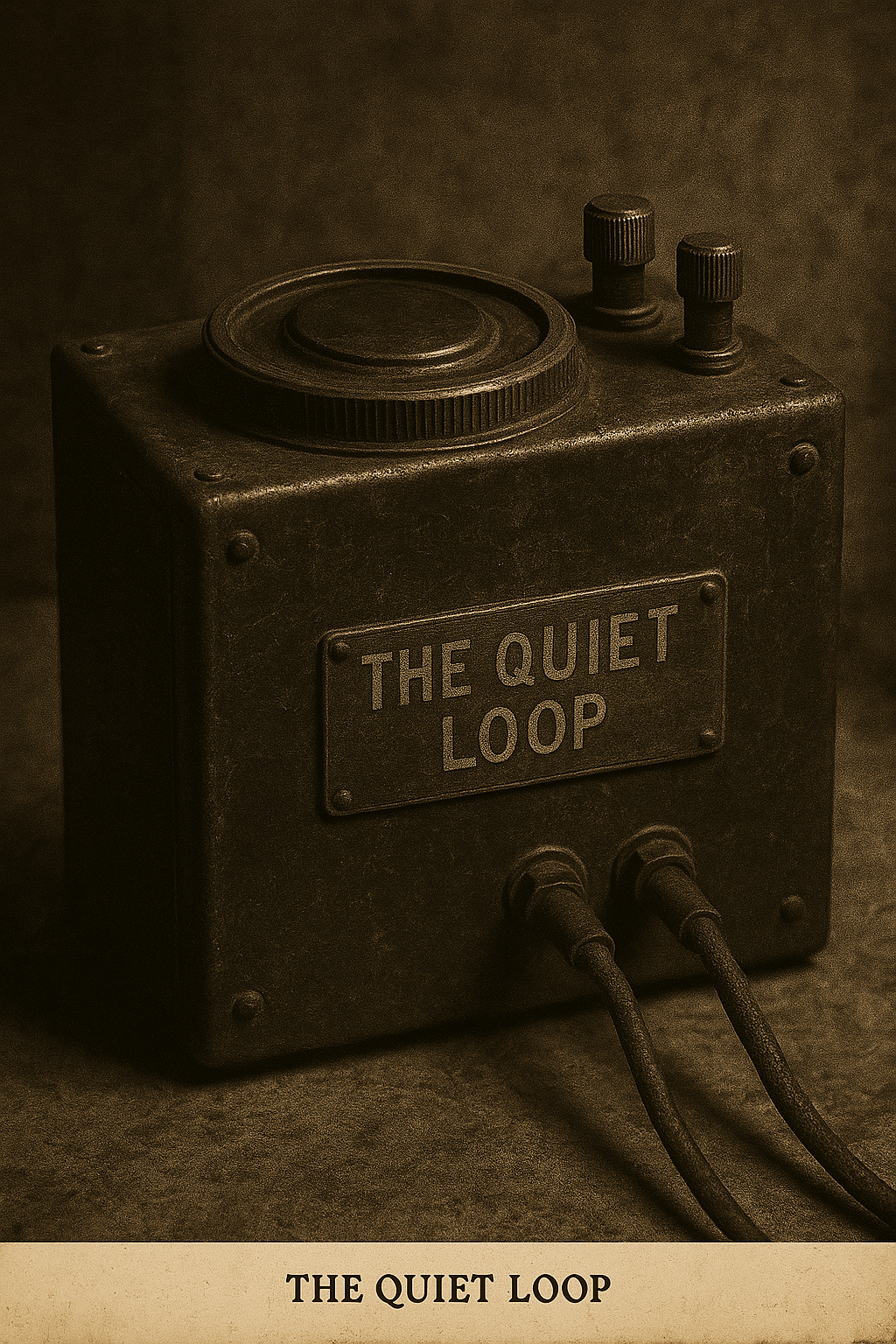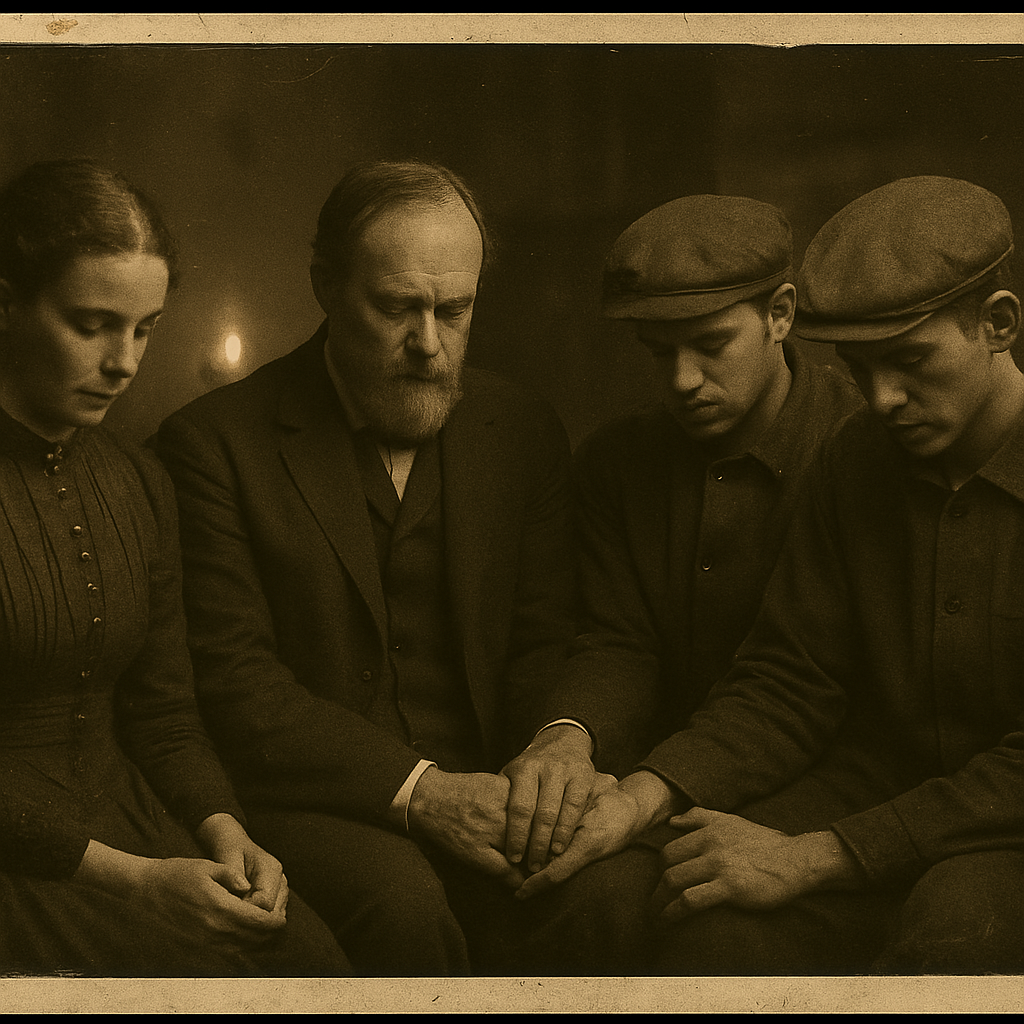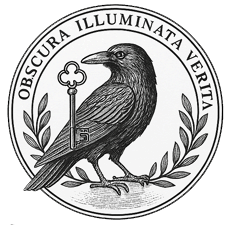The Quiet Loop
 Described only in fragments, the Quiet Loop was a device designed to store and replay silence. Not the absence of sound, but recorded moments of purposeful quietude. Used for calming unstable personnel and, according to legend, aligning internal architecture to a harmonic “memory plane.” Records suggest the Loop continues to hum softly beneath the Bell Room, even after being dismantled in 1968.
Described only in fragments, the Quiet Loop was a device designed to store and replay silence. Not the absence of sound, but recorded moments of purposeful quietude. Used for calming unstable personnel and, according to legend, aligning internal architecture to a harmonic “memory plane.” Records suggest the Loop continues to hum softly beneath the Bell Room, even after being dismantled in 1968.
“It never recorded silence. It remembered the exact moment a soul decided not to speak.”
— Clara Bevel, final memo before disappearance (1888)
StormCroft’s Quiet Loop remains one of the most elusive and troubling devices in the known archive. It is referenced sporadically across journal pages, CroftNet node packets, and scorched memory strips. Described not as a recorder or playback unit, but as an emotional condenser, it preserved not silence — but the moment before a sound is made.
Who Built the Quiet Loop?
No official inventor was listed. Early diagrams found embedded within the pages of the Third Rail Book (see Inventions Registry) suggest three separate authors:
-
Dr. Abram Finch, whose obsession with memory-laced soundfields seems foundational.
-
Reuben Morris, who drew a coil in chalk over and over on the East Wall of the Loop Chamber.
-
And — surprisingly — Timothy Lyall, whose name appears etched in mirror-writing on a forgotten circuit plate, though he would not be born for another 50 years.
This has led archivists to speculate: Was the Quiet Loop built forward through time? Or did it always exist, waiting for someone to notice?
Who Was Exposed?
Dr. Abram Finch
-
Spent over 140 hours within the Loop Chamber during calibration phase.
-
Began to hear “his younger self explaining things he’d never known.”
-
Grew increasingly silent in meetings, claiming his answers were already stored in the floor.
-
After his death, the Loop reportedly stopped generating low-frequency pulses for exactly 7 minutes — the length of his final breath.
Clara Bevel
-
Believed to have transcribed the Loop’s early signals.
-
Her notes describe the “sound of withheld forgiveness,” and a pulse that caused her hands to remember bruises she had never received.
-
Disappeared in 1888. A voice on the Loop in 1936 said only:
“Clara was right. The memory is the room.”
Elijah Morris
-
Frequently sat beside the Loop, gloved hand against the casing, eyes closed.
-
Claimed it “filtered out lies” and made him see Wren more clearly.
-
His emotional bond with Octavius Wren intensified during this time. Witnesses noted they often emerged from the chamber in complete synchrony — finishing one another’s gestures, not just words.
Octavius Wren
-
Designed the Loop Chamber housing but rarely entered it.
-
Once stood for 11 hours outside the sealed door.
-
Reported afterwards that “Reuben has been speaking to me again,” despite Reuben being in the North Field all day.
The Bell Room Echo (Post-1968)
-
After the dismantling of the Quiet Loop, a low harmonic re-emerged under the Bell Room floor in 1971.
-
Leo Fenner, the ambient archivist, claimed this was “the Loop trying to play back what it was never told.”
-
He recorded a 33-second clip of pure silence. When reversed, it contained six names — all former staff — each whispered in a different accent.
What Did It Do?
The Quiet Loop’s effect was not audible but relational. It blurred the boundary between people’s inner decisions and outer behaviours. Those exposed to the Loop long-term:
-
Began to speak only in mirrors (repeating one another’s words before they were spoken).
-
Formed bonds no one else could understand.
-
Vanished from logs but were later “found” within footnotes, sketches, or dream reports.
It’s said that those emotionally entangled within its field remained resonant with one another across time. This may explain why Finch could sense Reuben from a separate wing, or why Wren once wrote:
“I no longer need to say goodbye. I’ve stored it in the Loop.”
Final Discovery

In 1984, during a blackout, an intern found a sealed envelope beneath the floorboards near the original Loop housing.
Inside:
-
A photograph of Clara, Finch, Elijah, and Reuben — heads bowed, hands interlinked.
-
A note in Finch’s handwriting:
“This is what silence sounds like when it loves you back.”
(image: This rare, sepia-toned photograph captures four of StormCroft’s most enigmatic figures — Clara Bevel, Dr. Abram Finch, Elijah Morris, and Reuben Morris — seated closely together, heads bowed and hands interlinked in what appears to be an unspoken ritual of silence or communion.
Believed to have been taken shortly after the Quiet Loop’s activation, the image was recovered from a sealed envelope beneath the Loop Chamber floor in 1984.
Their positioning suggests deep emotional synchrony — a human harmonic in alignment with the Loop’s unseen frequencies.
The photograph remains undated. All four individuals were never officially recorded together in the same location. Their presence in one frame remains unexplained).
